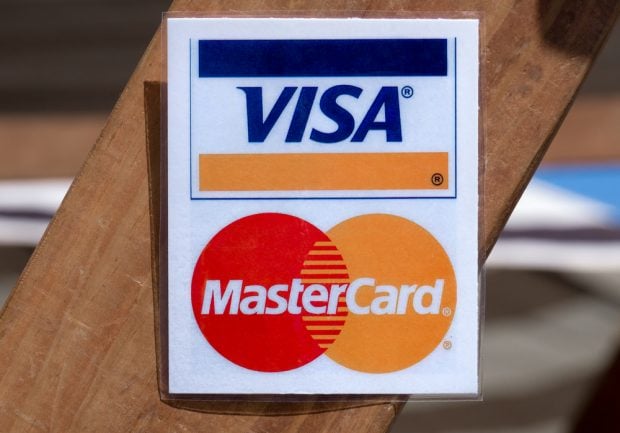Nearly everyone has – at one time or another –experienced the inconvenience of replacing a lost, stolen ordamaged debit or credit card. The hassle of contacting the cardissuer and explaining the situation is difficult enough, but thatis typically followed by the prolonged delivery time of thereplacement card.
|Within this circumstance, however, lies an opportunity forcredit unions to truly shine with existing and potential members.With instant issuance systems, credit unions can produce and issuenew or replacement cards for their members within minutes frominside the branch.
|Many credit unions have only just begun to realize the new valueproposition of instant issuance, including reduced expenses,increased member satisfaction and improved security. Thesignificant improvement of instant issuance's ROI in recent yearsnow has many institutions reevaluating deployment of this uniquesolution.
|Faster, Smaller, Cheaper
|Advanced software capabilities now enable end-to-end issuanceintegrated to the core system and card processor. Many of thesesystems are “cloud” or Software as a Service (SaaS)-based, meaningthere is little or no IT effort required by the institution.
|Also, many embossing subsystems are becoming more durable andless expensive, opening the door to cost-effective issuance of bothcredit and debit cards. This is significant because the more cardsa branch can issue, the stronger the ROI. While card embossing isnot always a requirement (such as debit), embossing and tipping(applying silver or gold to the numbers) serves as an effectivefraud deterrent and enhances the credit union's branding on thecard.
|Additionally, with optional card carousels, credit unions canincrease the variety of card types stored and issued to members,providing a number of different styles for debit and credit, aswell as value, prestige, and small business cards.
|Advanced print technology has also changed how credit unions nowdeploy instant issuance. The most common method of printing, “dyesublimation,” uses heat to transfer dye onto the card, then appliesa clear overcoat to seal in the print. While dependable, thismethod has its drawbacks, including no edge-to-edge printing, poorcolor matching and typically low-quality print resolution.
|In response, reverse-transfer printing technology has beendeveloped to address these shortcomings. Reverse-transfer creates amirror image of the card design on a thin film, and then uses heatand pressure to bond the film to the card, resulting in a sharp,accurate and durable card with a high quality image.
|Embossing vs. Flat Cards
|Historically, economics has limited most institutions todeploying flat debit cards, as embossing systems were too expensiveand required more servicing. However, as hardware prices havedecreased and issuing systems have become easier to manage and moredependable, embossing is now making more sense.
|Unlike flat cards, embossed cards do not require dye sublimationprinting, further reducing consumables costs. Embossing alsoincreases the number of cards issued per branch, further enhancingthe ROI. Additionally, members perceive embossed cards – even debitcards – as having greater prestige and increased security.
|Build, Buy, or Rent
Because the institution uses an in-branch device to emboss,print and encode the cards, pricing for instant issuance systems istied to both hardware and service components.
|Many of today's instant issuance providers offer the “cellphone” model, in which the institution signs a term contract inexchange for the provider's hardware at no charge (though someproviders require an upfront deposit to defray the device cost,typically ranging from $5,000 to $8,000).
|Similarly, the service cost is often a combination of a monthlyfee and a “per click” fee for each issued card. Providers offerdifferent hardware options based on anticipated volumes, card types(flat, embossed or both) and number of pre-printed styles.
|Providers themselves also vary, as some core system vendors alsoprovide centralized account issuance and processing services, andtoday many of these vendors are increasing in-branch offerings.Some provide hardware and software services, including integrationto the core and processor, while others sell the middle piecesoutright and provide implementation services.
|This third option may ultimately prove most cost-effective,assuming the credit union has the IT resources to own and managethe final product.
|Stating the Case
For members, instant issuance means a faster, more convenientdelivery of the same card product at the same price, and allows forimmediate use. For credit unions, the proposition is manifold:
- Greater member loyalty and retention, as wellas an enhanced brand versus traditional competitors;
- Additional fee income resulting from expeditedissuance traditionally paid to the central issuer orprocessor;
- Additional transaction fees that credit unionsforego by waiting for delivery of centrally-issued cards tomembers. As many as a third of branch-issued cards are used thesame day they are issued;
As the popularity and sophistication of instant issuancetechnology continues to increase, credit unions have theopportunity to provide a desirable and differentiating service totheir members. The ability to instantly issue credit and debitcards will not only increase operational efficiencies andprofitability within the branches, but increase convenience formembers, further increasing satisfaction and loyalty.
|Glen Fossella isCOO at CTS North America in Wixom, Mich.
Complete your profile to continue reading and get FREE access to CUTimes.com, part of your ALM digital membership.
Your access to unlimited CUTimes.com content isn’t changing.
Once you are an ALM digital member, you’ll receive:
- Critical CUTimes.com information including comprehensive product and service provider listings via the Marketplace Directory, CU Careers, resources from industry leaders, webcasts, and breaking news, analysis and more with our informative Newsletters.
- Exclusive discounts on ALM and CU Times events.
- Access to other award-winning ALM websites including Law.com and GlobeSt.com.
Already have an account? Sign In
© 2024 ALM Global, LLC, All Rights Reserved. Request academic re-use from www.copyright.com. All other uses, submit a request to [email protected]. For more information visit Asset & Logo Licensing.









